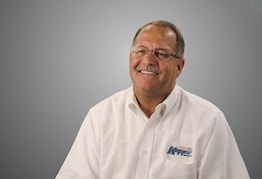When you hear the term defensive driving, it is easy to imagine a person driving very slowly in the right lane. However, defensive driving is much more than being cautious and slow. It is an approach to driving that will help you prevent accidents.
Avoid accidents by correcting problems that may become dangerous. Consider these top ten defensive driving tips.
Defensive Driving Tip #1: Eliminate Distractions
Scientists have studied the reasons behind the large number of car accidents that occur every year, and the most common cause is that the driver has been distracted. For this reason, eliminating distractions is #1 among top ten defensive driving tips. Limit the number of distractions that you have in the car, such as eating or talking.
Defensive Driving Tip #2: Focus on the Horizon
Rather than keeping your eyes fixed on the car right in front of you, keep your eyes on the horizon as you watch the traffic ahead of you. You will be able to see any activity that may cause an accident, and it will give you plenty of time to adjust accordingly.
Defensive Driving Tip #3: Stay in One Lane as Much as Possible
Many car accidents happen when a person suddenly changes lanes and gets rear ended. Choose a lane and stay there as long as possible.
Defensive Driving Tip #4: Keep an Eye on Lane Changers
If you aren't the one changing lanes, then you need to keep an eye on those who are. Many drivers try to slip between cars, even if it is too dangerous to do so. Watch all of your mirrors so that you can see anyone who may be approaching you quickly. Slow down to let them pass if necessary.
Defensive Driving Tip #5: Watch Blind Spots
While some people may not zip in and out of traffic, others carelessly move into another lane without checking their blind spots. In order to avoid getting struck by one of these drivers, stay out of the blind spots of the cars around you. You can accelerate so that they can see you clearly, or you can slow down so that you are a safe distance behind the other car.
Defensive Driving Tip #6: Avoid Eye Contact
Scientists have found that road rage is escalated when drivers look directly at one another. Most people who suffer from road rage are looking for ways to anger others rather than getting angry about something that has just occurred. Avoid making eye contact with these drivers, and continue driving as you were.
Defensive Driving Tip #7: Check Intersections
Intersections are where many accidents occur. Many drivers will simply start driving when the light turns green, but not everyone stops when the light turns red. Check your left side for any cars that are ignoring the red light, and then look to the right before you start driving through the intersection.
Defensive Driving Tip #8: Know the Rules of Swerving
It is very important that you only swerve if you are unable to prevent an accident otherwise. In order to swerve safely, you should make sure that the lane that you will be entering is empty, and return to your lane immediately to prevent further problems.
Defensive Driving Tip #9: Keep Your Distance from Bad Drivers
If you notice that someone is showing signs of being a bad driver, then you need to keep your distance. You may want to change lanes and slow down to let the car pass so that you don't have a chance of it rear ending you. If you need to pass a bad driver, try to keep a good distance between you.
Defensive Driving Tip #10: Don't Tailgate
When you drive too closely to another vehicle, you increase your risk for an accident because you leave yourself very little room to avoid an accident. Try to stay at least three to four seconds behind the person in front of you. If you have a larger vehicle, you will need to allow more room so that you will have enough time to stop. Tailgating is on just about every top ten defensive driving tips list, and for good reason.
By following these top ten defensive driving tips, you will be able to prevent accidents by simply being more aware about what is going on around you.
 Hope the helps.
Hope the helps.
Bob Kupper
Owner, Kupper Automotive


No comments:
Post a Comment